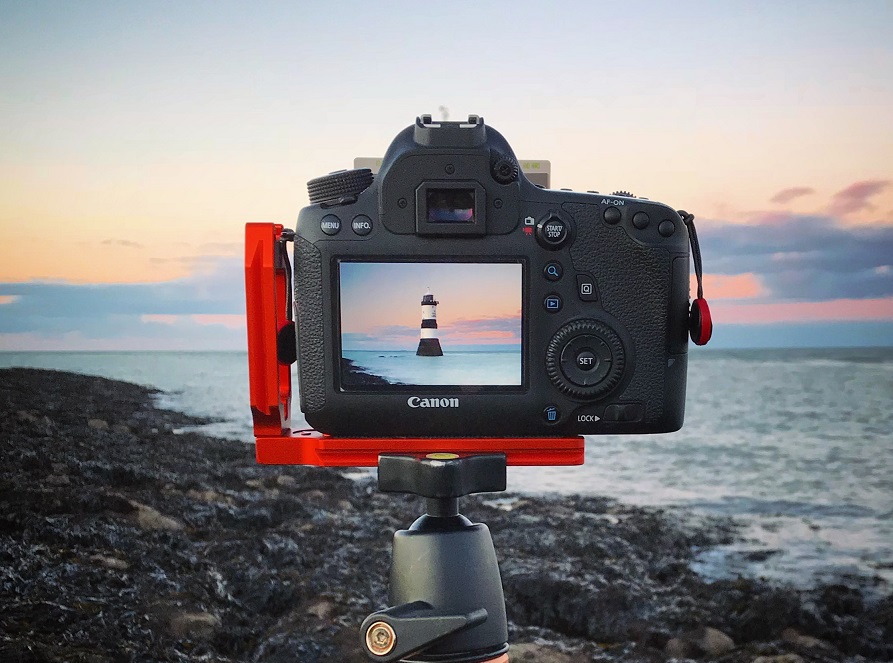
DSLRs (Digital Single Lens Reflex) and mirrorless cameras are both widely used by professional photographers and enthusiasts alike. Understanding the differences between these two types of cameras is crucial for anyone looking to make the transition from DSLR to mirrorless.
DSLR cameras have been the go-to choice for photographers for many years. They use a mirror and prism system to reflect light into an optical viewfinder, allowing you to see exactly what the lens sees. This feature is highly valued by photographers who prefer the traditional shooting experience and the ability to compose their shots precisely. However, DSLRs tend to be larger, bulkier, and heavier than mirrorless cameras, making them less convenient for travel or casual shooting.
On the other hand, mirrorless cameras, such as the Nikon Z 6II and the Nikon Z 7II do not have a mirror or optical viewfinder. Instead, they use a digital display or an electronic viewfinder (EVF) to preview the image. Mirrorless cameras are generally more compact and lightweight than DSLRs, making them easier to carry around. They also offer advanced features like real-time exposure preview, focus peaking, and customizable settings. However, some photographers may find the electronic viewfinder less intuitive and prefer the optical viewfinder of DSLRs.
Advantages of Mirrorless Cameras over DSLRs
There are several advantages of using a mirrorless camera over a DSLR, which is why many photographers are making the switch. Firstly, the compact size and lightweight nature of mirrorless cameras like the Nikon Z 30 make them highly portable. Whether you’re travelling or simply shooting on the go, a mirrorless camera is more convenient to carry around without compromising on image quality.
Another advantage of mirrorless cameras is their silent shooting capability. Unlike DSLRs that have a mechanical shutter, mirrorless cameras use an electronic shutter, resulting in virtually noiseless operation. Cameras such as the Nikon Z 5 are particularly useful in situations where silence is required, such as wildlife photography or capturing intimate moments at weddings.
Additionally, mirrorless cameras offer advanced autofocus systems. They use on-sensor phase detection autofocus (PDAF) technology, which allows for faster and more accurate focusing. This is especially beneficial when shooting fast-moving subjects or in low-light conditions, where precise autofocus is crucial.
Transitioning from DSLR to Mirrorless: Step-by-Step Guide
Transitioning from a DSLR to a mirrorless camera may seem daunting at first, but with the right approach, it can be a smooth process. Here is a step-by-step guide to help you make the transition:
- Research and choose the right mirrorless camera: Start by researching different mirrorless camera models and determining which one suits your needs and preferences. Consider factors such as image quality, lens compatibility, ergonomics, and available features.
- Familiarise yourself with the mirrorless camera’s controls and settings: Mirrorless cameras often have a different layout and menu system compared to DSLRs. Spend time familiarising yourself with the various controls, buttons, and settings of your new camera. Refer to the user manual and online tutorials for a better understanding.
- Practice using the electronic viewfinder or digital display: One of the key differences between DSLRs and mirrorless cameras is the absence of an optical viewfinder. Take some time to get used to the electronic viewfinder or digital display of your mirrorless camera. Experiment with different shooting modes and settings to understand how the image preview works.
- Invest in additional lenses or adapters: If you already own a collection of lenses for your DSLR, you may need to invest in additional lenses or lens adapters to ensure compatibility with your new mirrorless camera. Research the available options and choose the ones that best suit your shooting style and needs.
- Experiment and practice: The more you use your mirrorless camera, the more comfortable you will become with its features and capabilities. Experiment with different shooting modes, autofocus settings, and exposure controls. Take the time to practise and refine your skills to fully harness the potential of your new camera.
Mastering Mirrorless Camera Settings and Features
Once you have made the transition from DSLR to mirrorless, it’s essential to master the settings and features of your new camera. Here are some key aspects to focus on:
- Customising the camera controls: Most mirrorless cameras offer customizable buttons and controls. Take advantage of this feature to tailor the camera’s operation to your shooting style. Assign frequently used functions to easily accessible buttons for quick adjustments in the field.
- Understanding exposure settings: Mirrorless cameras offer a range of exposure settings, including aperture, shutter speed, and ISO https://photographylife.com/what-is-iso-in-photography. Familiarise yourself with these settings and learn how to adjust them for different lighting conditions and creative effects. Practice using exposure compensation to fine-tune the exposure according to your desired result.
- Exploring autofocus modes and settings: Mirrorless cameras have advanced autofocus systems with various modes and settings. Experiment with different autofocus modes such as single-point, continuous, and tracking. Learn how to use face detection and eye tracking features for portrait photography. Practice using manual focus with focus peaking for precise control.
- Utilizing in-camera image stabilization: Many mirrorless cameras come equipped with in-body image stabilization (IBIS) systems. Understand how this feature works and learn how to maximize its effectiveness. Image stabilization can significantly improve the sharpness of handheld shots, especially in low-light situations or when using telephoto lenses.
- Making the most of electronic viewfinder or digital display: The electronic viewfinder or digital display of a mirrorless camera offers unique advantages. Experiment with features like real-time exposure preview, histogram display, and focus magnification. Utilize the digital level to ensure straight horizons and accurate composition.
Tips for Capturing Stunning Photos with a Mirrorless Camera
Now that you have a good understanding of mirrorless cameras and have mastered the settings and features, here are some tips to help you capture stunning photos:
- Take advantage of the compact size: The small and lightweight nature of mirrorless cameras allows you to be more discreet and agile. Use this to your advantage when capturing candid moments or shooting in crowded environments. You can blend in more seamlessly without drawing attention to yourself.
- Experiment with different lenses: Mirrorless cameras often have a wide range of lenses available, including compact primes, versatile zooms, and specialty lenses. Try different lenses to explore different perspectives and creative possibilities. Wide-angle lenses can capture expansive landscapes, while telephoto lenses can bring distant subjects closer.
- Use the electronic viewfinder creatively: The electronic viewfinder of a mirrorless camera provides a real-time preview of the image. This allows you to see the exposure and white balance adjustments in real-time. Use this feature to experiment with creative effects like long exposures or high-key/low-key photography.
- Take advantage of advanced autofocus features: Mirrorless cameras offer advanced autofocus features like eye tracking and subject tracking. Utilize these features to ensure sharp focus on your subjects, especially in fast-paced situations or when shooting moving subjects like wildlife or sports.
- Shoot in RAW format: Mirrorless cameras typically offer the option to capture images in RAW format, which provides greater flexibility for post-processing. Shooting in RAW allows you to recover more details in highlights and shadows, adjust white balance more accurately, and apply non-destructive edits to your images.
Conclusion
Transitioning from a DSLR to a mirrorless camera can be an exciting journey for any photographer. Understanding the differences between the two types of cameras, exploring the advantages of mirrorless cameras, and following a step-by-step guide can help make the transition seamless. Mastering the settings and features of your mirrorless camera, along with practical tips for capturing stunning photos, will enable you to fully harness the potential of your new gear. Embrace the change, experiment, and enjoy the creative possibilities that mirrorless cameras offer.

Just a group of real women dealing with life’s daily struggles! Want to write for us? Email: hello@thedailystruggle.co.uk